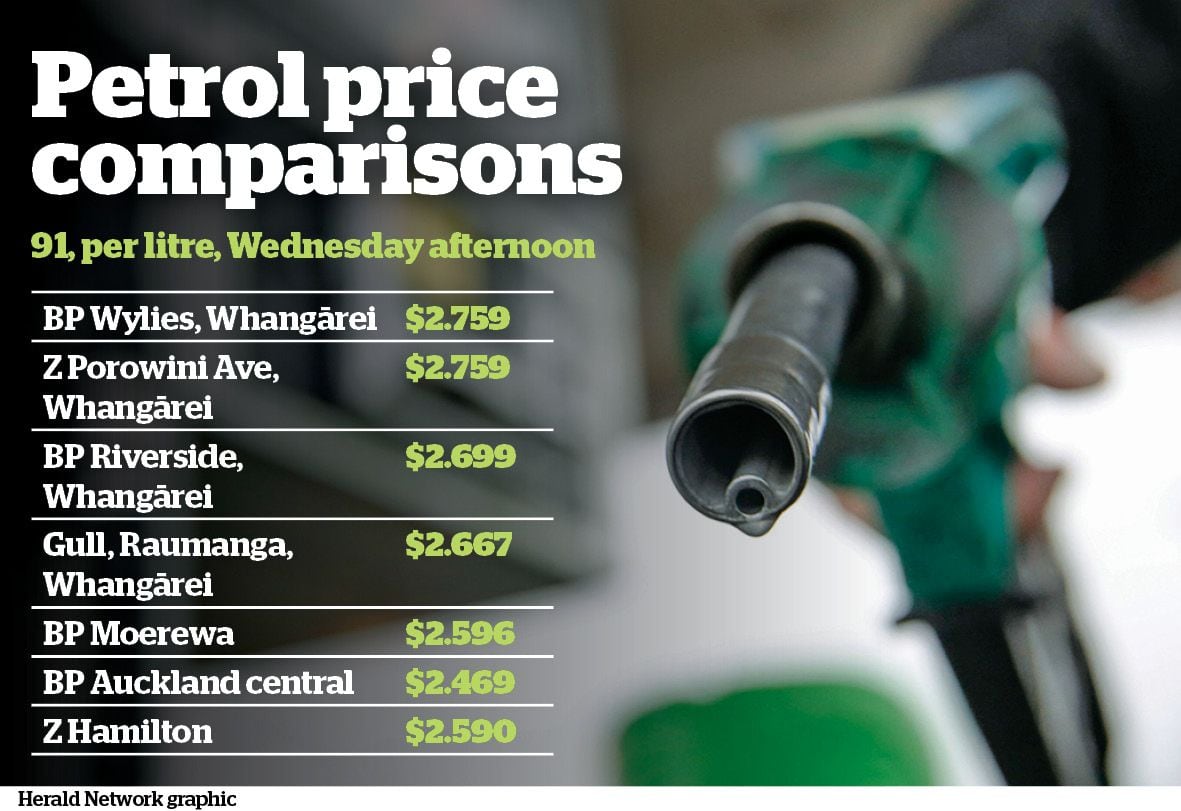The cost of filling up is more expensive in Whangārei than many other parts of the country.
Petrol prices have long been a hot topic in Northland and the latest figures show that Whangārei has some of the highest prices in the country.
The situation has led to Whangārei Mayor Vince Cocurullo
writing to the Commerce Commission to see what it can do about what he calls “unfairness”.
He’s yet to receive a response to the March 15 letter to the Commission but told the Advocate he has become increasingly concerned about the discrepancies between fuel prices in the district and the rest of the country.
Cocurullo said he’ll continue to push those in power for explanations but the fact he has yet to receive a response seemed to indicate that the Government watchdog “doesn’t really care” about the issue.
The Advocate has sought comment from the Commission.
But, Cocurullo said, it seems Whangārei is being treated unfairly as it has some of the most expensive prices in the country.
The concerns are shared by many motorists, with the issue the subject of debate on social media.

Whangārei residents Kevin and Suzy McCartain have done their own research after feeling they were being ripped off on petrol prices.
Advertisement
When they travelled to the Far North last week, they decided to gather some evidence of the price comparison. These prices (per litre) for 91 were observed on Thursday, April 20: Allied Kāeo, $2:36; BP Kāeo, $2:51; Allied Waipapa, $2:36; BP Waipapa, $2:49; Gull Waipapa, $2:22; BP Moerewa, $2:60; Caltex Kawakawa, $2:60.7; Gas Towai, $2:59; BP Whangārei, $2:75, Caltex Whangārei (both) $2:75 and Mobil Whangārei, $2:75.
“The prices we have seen in Auckland and other parts of the country are also mostly much lower than Whangārei. There may be differences in overheads further north than in Whangārei, but that surely wouldn’t be the case in large cities like Auckland,” Kevin said.
“It’s been going on for well over a year, and I can’t see why there should be such a big difference.”
A quick look at the Gaspy app showed the disparities, Cocurullo said.
/cloudfront-ap-southeast-2.images.arcpublishing.com/nzme/EBFLKKG6I5BDXI3XKG7XOH43FE.JPG)
The app showed that on Wednesday, BP Moerewa had $2.59.6, BP Riverside in Whangārei $2.69.9 and BP Wylies also in Whangārei, at $2.75.9. Gull in Whangārei had 91 at $2.66.7.
At the same time, he said petrol was cheaper in Auckland and Hamilton than in Whangārei, despite Auckland having a fuel tax imposed of 10 cents a litre. Prices in Auckland on the same day were as low as $2.49.9, and in Hamilton, as low as $2.59.
“There are some major discrepancies between fuel prices in Whangārei and the rest of the country, and even within Northland. It can’t be explained that it costs more to ship it north as it’s cheaper in Paihia and Moerewa, which are further north still. And they can’t say it’s lack of competition as there are at least six different suppliers here,” Cocurullo said.
“There are 20 to 30 cent differences between Whangārei and other places, and I want to know why that is and what can be done to ensure the people of Whangārei get treated more fairly.”
Advertisement
The Advocate approached the major fuel companies to ask why and was told fuel prices are set by a number of factors, including product cost, exchange rates, transportation, retailing costs and local market competition.
A Mobil spokesperson said setting retail prices is a balancing act between the immediate effects and influences of the market, versus the longer-term outlook for its business and the industry.
“Mobil strives to offer competitive prices in each segment of the market in which it operates. New Zealand continues to be a very tough, competitive petroleum market,” the spokesperson said.
A Z and Caltex spokesperson said their fuel pricing is localised, which means that prices can be different at service stations within regions or even the same towns based on a range of factors such as varying property overhead costs or local competition. Based on a combination of factors, these differences can be significant.
“At Z, the prices are set by head office, not by the individual service stations. Z is also the wholesale fuel supplier to the network of Caltex-branded service stations. As Caltex retailers are independently owned/operated, they make their own independent decisions regarding pricing at their retail site.”
/cloudfront-ap-southeast-2.images.arcpublishing.com/nzme/TQ22NU4WJFDWDOBJK7B4ADFDEI.JPG)
A BP spokesperson said there are a number of factors that influence prices.
“We continue to review BP Connect prices every day to ensure competitiveness in the market. The BP website has more information on the facts about fuel pricing. There are also a number of independent BP operators all around the country who set their own prices and manage their own operations. BP continues to pass on the Government’s full, temporary fuel excise reduction across all BP-owned and operated Connect sites.”
In his letter to the Commission, Cocurullo said he’d noticed a significant discrepancy between the fuel prices compared to the rest of New Zealand and had urgent questions as to why we are being forced to pay more at the pump than our more southern counterparts.
“Why are our fuel costs so much higher here in Whangārei, when we have a major fuel import terminal right on our doorstep? How is it possible that our Auckland neighbours are paying less than us per litre when they also have an added fuel tax and GST?”
/cloudfront-ap-southeast-2.images.arcpublishing.com/nzme/MPYZGS5BSRGOPOHWRAEWW3DOMY.JPG)



